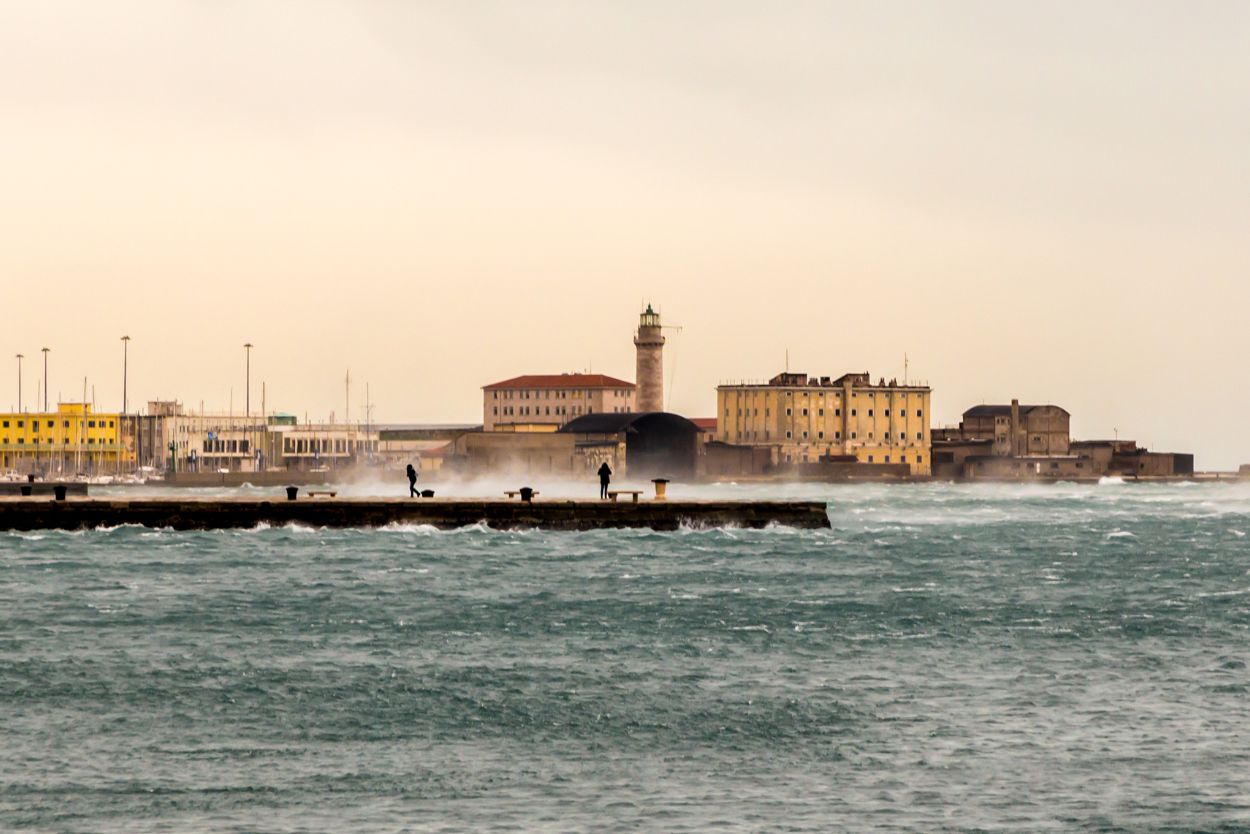The bora of Trieste: a unique link between wind and city
Among the elements that are indissolubly linked to Trieste there’s not only coffee, but also wind. Or to be precise, a wind in particular: the bora. More than a simple meteorological phenomenon, the bora of Trieste is an element of identity of the city which is reflected also in its culture, everyday life and collective imagination.

The bora of Trieste between history and legend
But what is the bora? This cold, dry wind, of northeastern origin, is formed when the masses of cold air descend from the Karst and meet the warmest air on the coast. The gusts (here called “refoli“) can exceed 150 km per hour: the official record is 171 km/h, recorded in 1954 before the wind force broke the anemometer, but there are those who claim that this number has been exceeded at least on a couple of occasions.
The name bora comes from “Boreas”, who in Greek mythology represented the north wind. In the Triestine dialect, however, the bora is called simply “la Vecia” (“the old woman”), perhaps referring to one of the many popular legends. In this version the bora would be an old witch of the Karst, able to bring damage and chaos in the city when angry or to sweep away the clouds with fresh air and pleasant weather when in a good mood. In Trieste they distinguish in fact the bora in “clear”, accompanied by bright sky, or “dark”, associated with clouds and precipitation.
In general, the phenomenon of the most impetuous bora occurs usually between November and March, while the wind appears with some more calm gusts during the summer.

Living in Trieste with the bora
Those who live in Trieste learn to live with the bora and, somehow, consider it part of their daily life with various tricks. Women, for example, were said to have special weights to hang from their skirts so that they could not be lifted. Walking around the city you can see how even the architecture has been shaped by the bora: here and there are barriers and iron railings, to which to hold when the wind blows stronger, the shutters are anchored by robust holds, and above several buildings can be found rotating chimneys designed not to block smoke.
For those who visit Trieste and want to know more about this peculiar atmospheric phenomenon, a good starting point is probably the Museum of the bora. This small space, housed in the “Warehouse of the Winds”, celebrates bora through objects, stories, photos and interactive installations. Visitors can discover various curiosities related to bora, such as the effect of wind on the trees of the Karst.
Another place not to be missed related to the bora is the Molo Audace: at the end of the walk of almost 250 meters surrounded by the sea is in fact the famous bronze wind rose, with the bora represented on one side. If the wind is really blowing, however, avoid getting yourself here: the Molo Audace is one of the most exposed points in the city, where it is better not to be surprised by the gusts.



Leave a comment